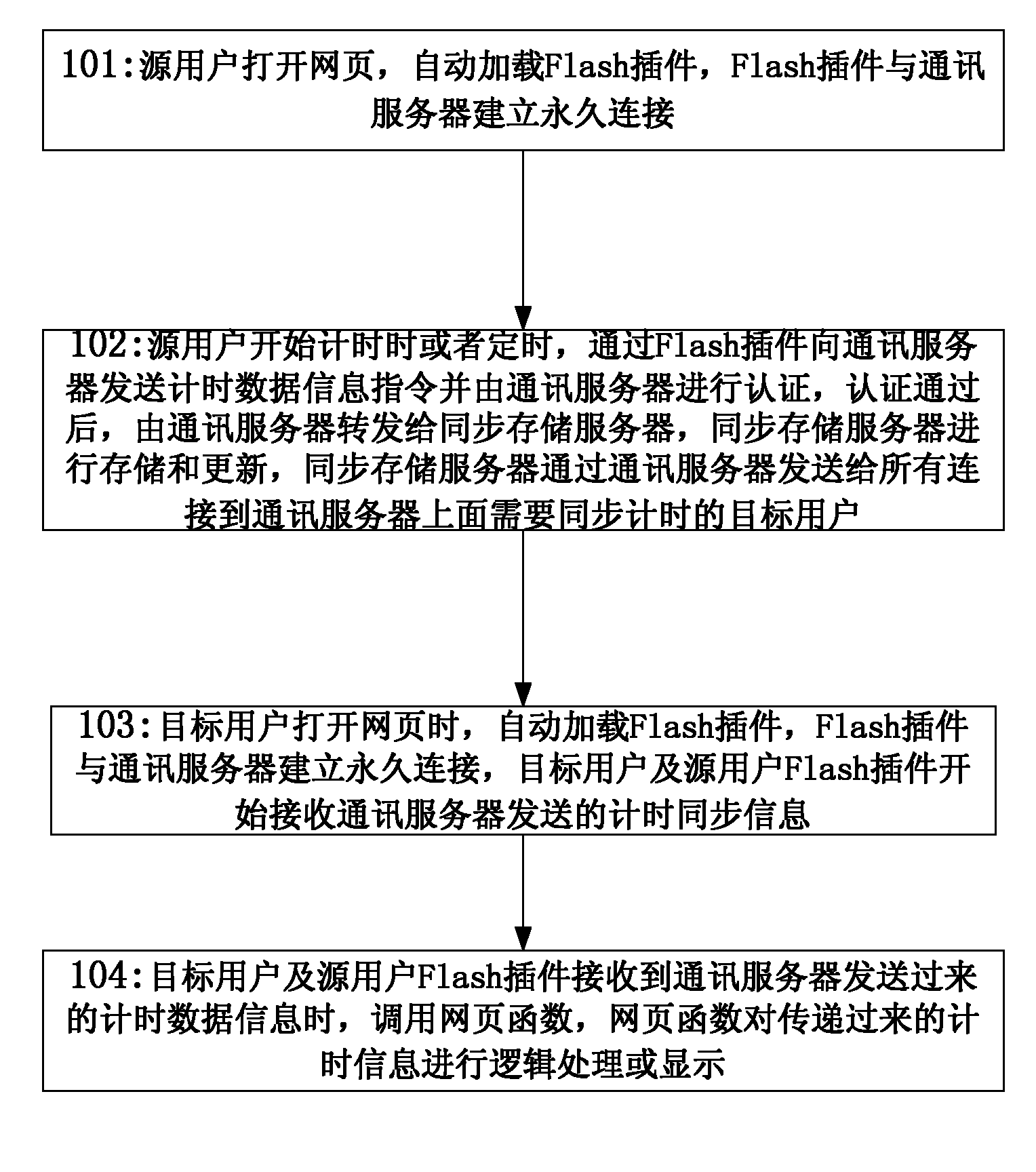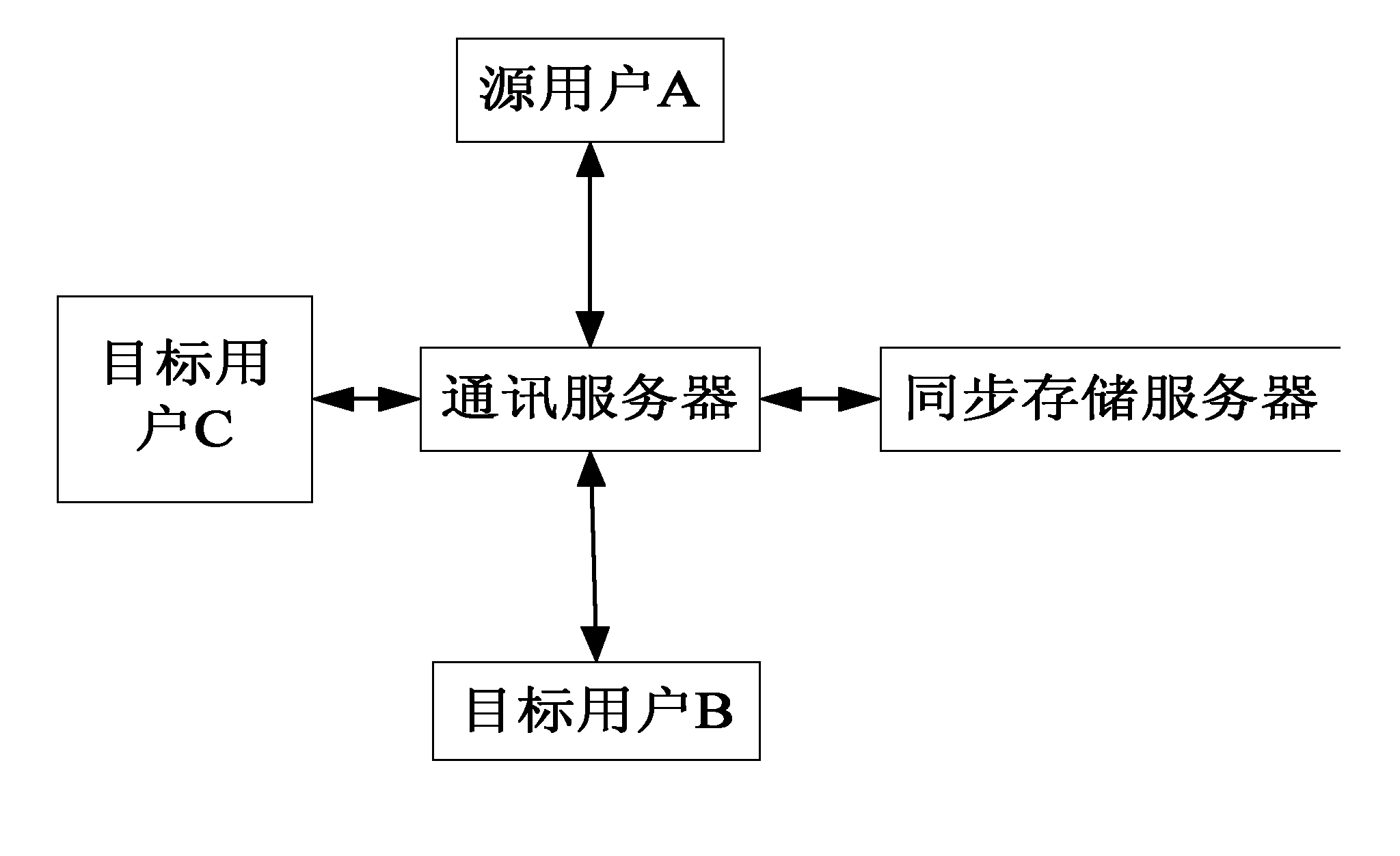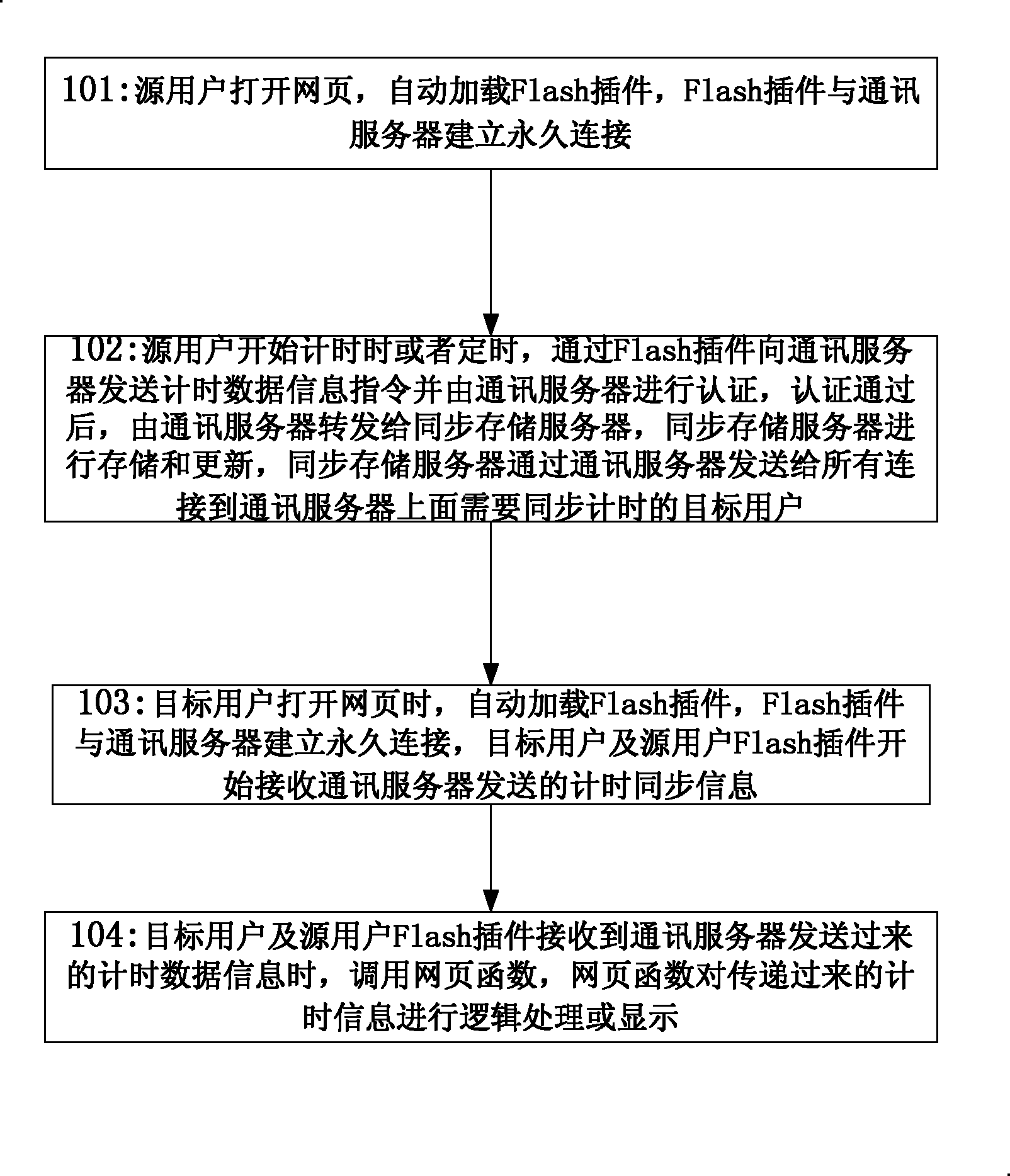Webpage-based timing security synchronization realization method and system
A web page and security technology, applied in the network field, can solve problems such as hidden security risks and inability to cause effective control.
- Summary
- Abstract
- Description
- Claims
- Application Information
AI Technical Summary
Problems solved by technology
Method used
Image
Examples
Embodiment Construction
[0017] Hereinafter, the present invention will be described in detail with reference to the drawings and examples. It should be noted that, in the case of no conflict, the embodiments in the present application and the features in the embodiments can be combined with each other.
[0018] figure 1 It is a detailed flow chart of the present invention, comprising the following steps:
[0019] Step 101: The source user opens the webpage, automatically loads the Flash plug-in, and the Flash plug-in establishes a permanent connection with the communication server.
[0020] In the above technical solution, step 101 includes the following process:
[0021] The source user opens the webpage, automatically loads the Flash plug-in, and the Flash plug-in establishes a permanent connection with the communication server by calling the XMLSocket class.
[0022] Step 102: When the source user starts timing or timing, the timing data information instruction is sent to the communication serv...
PUM
 Login to View More
Login to View More Abstract
Description
Claims
Application Information
 Login to View More
Login to View More - R&D
- Intellectual Property
- Life Sciences
- Materials
- Tech Scout
- Unparalleled Data Quality
- Higher Quality Content
- 60% Fewer Hallucinations
Browse by: Latest US Patents, China's latest patents, Technical Efficacy Thesaurus, Application Domain, Technology Topic, Popular Technical Reports.
© 2025 PatSnap. All rights reserved.Legal|Privacy policy|Modern Slavery Act Transparency Statement|Sitemap|About US| Contact US: help@patsnap.com



